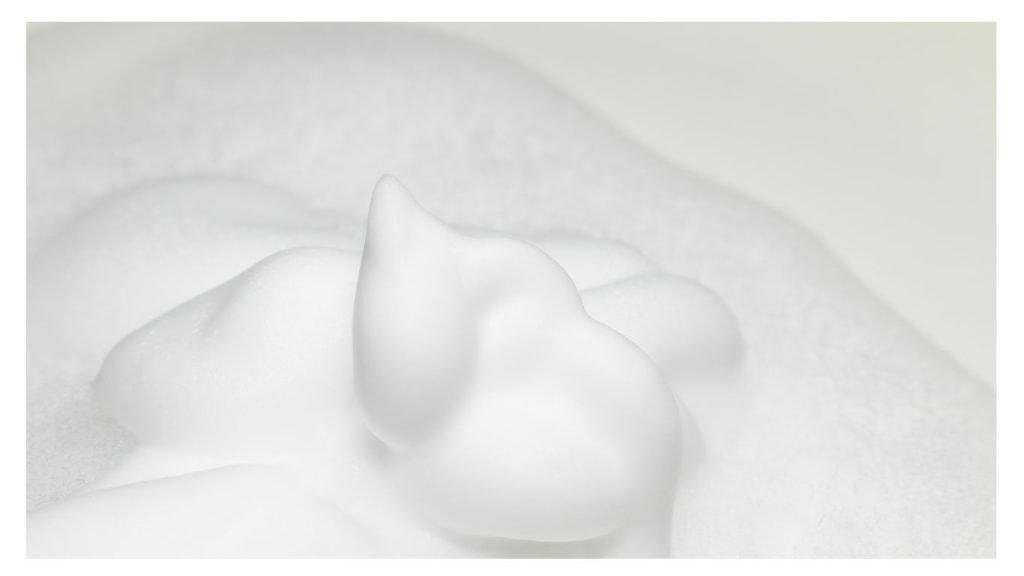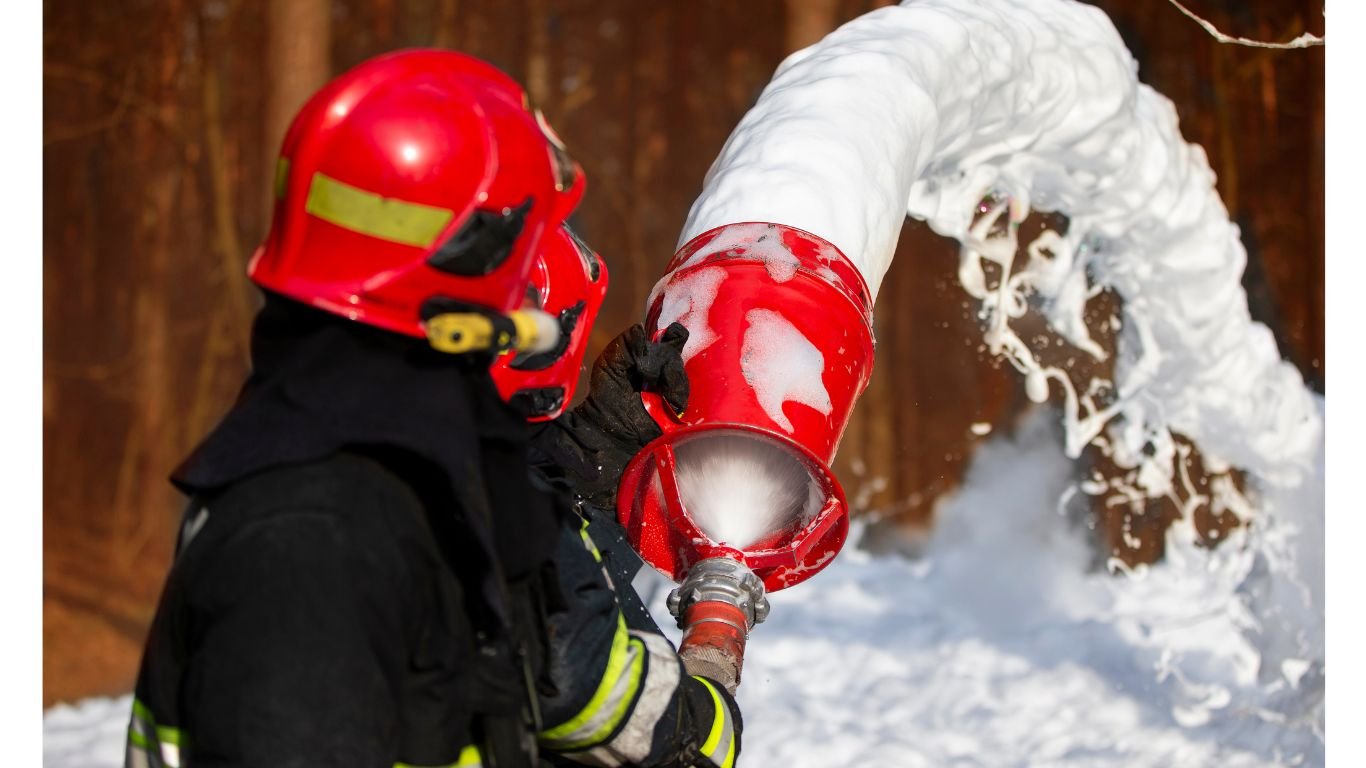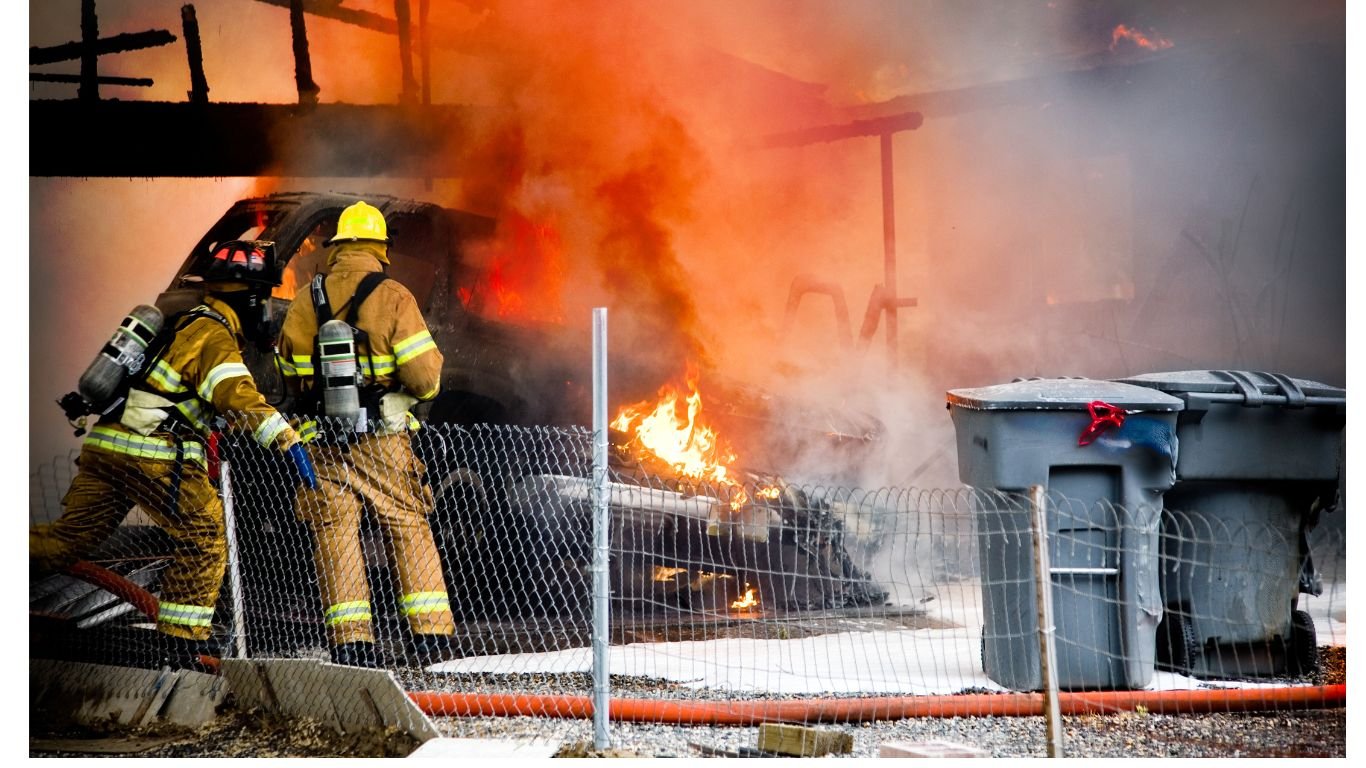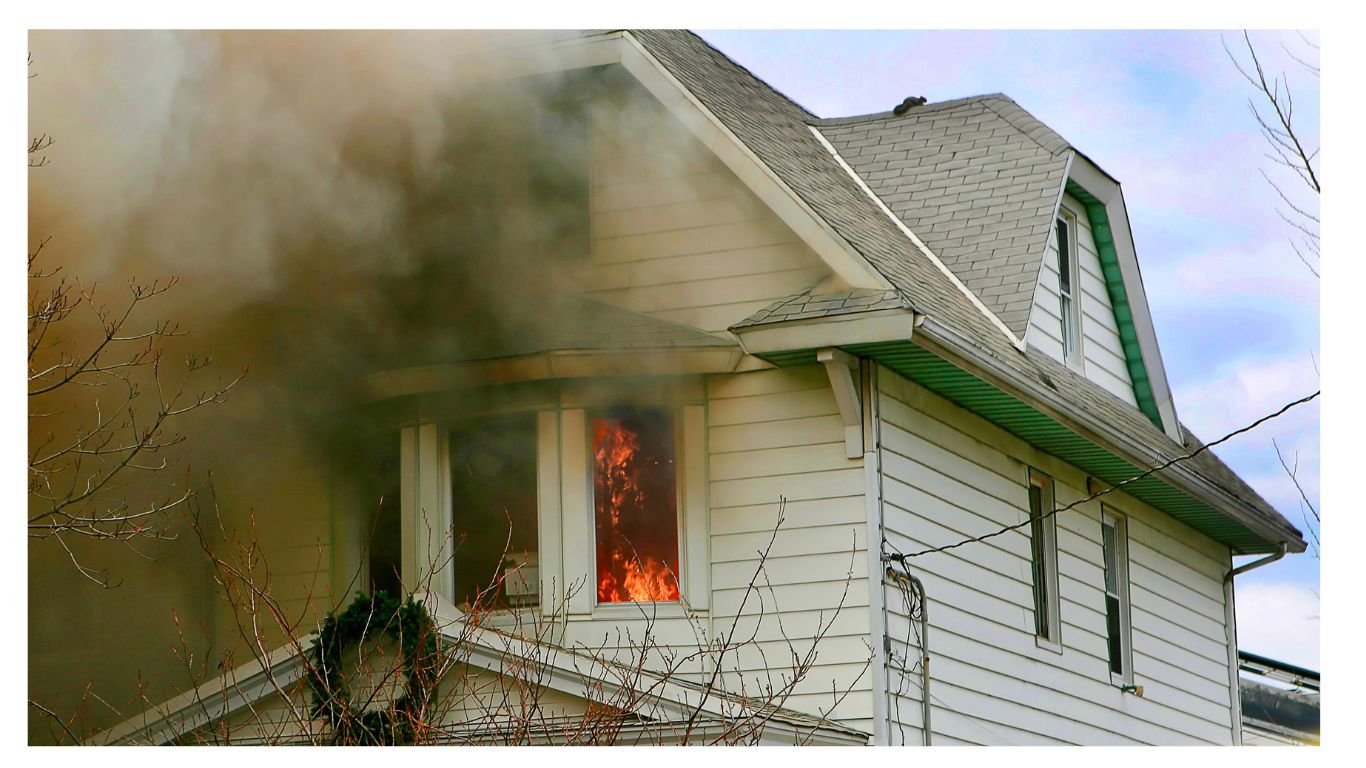Firefighting Foam
Foam is consisting of synthetic detergent, butoxyethanol (ethyl alcohol), and water. Firefighting foam is used in fire suppression. It is mostly used for Class B fires. Its role is to cool the fire and coat the fuel, preventing it from oxygen. Firefighting foam was invented by Russian engineer and chemist Aleksandr Loran in 1902.

Foam composition and contents
Its concentration before the spray is;
Foam 3%
Water 97%
After the foam has been discharged from FMBP (foam-making branch Pipe) its concentrations become.
Foam 3%
Water 87%
Air 10%
Fire Fighting Foam Types
Firefighting foam is classified into two main types
Class A Foam
Class B Foam
Class A Firefighting Foam
This type of foam is used to fight fires involving ordinary combustibles. It is also effective on organic materials like hay and straw. The class “A” fire is also used to protect buildings in forest fires & brush fires where the supply of water is limited.
Class B Firefighting Foam
This type of foam is used to fight class B fires. It is used in fires involving flammable and combustible liquids. Various types of class “B” foam can be used in case of class “B” fires.
Types of Class B Foam
Class B foam is divided into two types
- Synthetic foams
- Protein foams
Synthetic Firefighting Foam
Synthetic surfactants are the foundation of synthetic foams. For quicker dousing of fires, they improve the flow and spreading across the surface of liquids based on hydrocarbons. They pose a threat to groundwater quality and have poor post-fire security.
- AFFF (Aqueous Film Forming Foam)
- AR-AFFF (Alcohol-resistant aqueous film-forming foams)
- FFF (fluorine-free foam)
What is AFFF Foam(Aqueous Film Forming Foam)
Fluorocarbon surfactants, a foaming ingredient, and a stabilizer make up these foam compounds. All varieties of water can be used with these substances. This foam has quick knockdown capabilities and is appropriate for liquid hydrocarbon fires, however, it drains slowly.

AR-AFFF (Alcohol-resistant aqueous film-forming foams)
While alcohol resistance foam shares many of the same characteristics as AFFF, it is specially prepared to resist dissolution by alcohols and other polar solvents. On these alcohol flames, ordinary foams are ineffective.
FFF (fluorine-free foam)
FFF (fluorine-free foam) commonly known as F3, are foams that include no fluorosurfactants and are primarily based on hydrocarbon surfactants.
Protein Firefighting Foam
Natural proteins serve as the foaming factors in protein foams. Protein foams are biodegradable, as opposed to synthetic foams. They produce a foam blanket that is more heat-resistant and durable, but they flow and spread more slowly.
- FPF (Fluor protein foams)
- FFFP (Film-forming Fluor protein foam)
- AR-FPF (Alcohol-resistant Fluor protein foam)
- AR-FFFP (Alcohol-resistant film Forming Fluor protein foam)
FPF (Fluor protein foams)
It also includes animal waste and byproducts, which together with the added fluoro compounds boost its efficiency. For low flash point fires, it is employed.
FFFP (Film-forming Fluor protein foam)
The AFFF and fluoro protein foam are combined in this, offering a high level of knockdown effect, post-fire security, and burn-back resistance. It is appropriate for flames fueled by hydrocarbon liquids, such as deep pool fires using low flash point fuels with protracted pre-burn times.
AR-FPF (Alcohol-resistant Fluor protein foam)
a hydrolyzed protein-based foam containing fluorocarbon surfactants known as a fluoro-protein alcohol-resistant foam concentrate. This foam is specifically designed to put out fires caused by polar solvents and combustible hydrocarbons. This low-viscosity foam is suitable for many foam systems and has a low expansion feature. Low and medium-density foam.
AR-FFFP (Alcohol-resistant film Forming Fluor protein foam)
Alcohol resistance foam has properties similar to AFFF; however, it is formulated so that alcohols and other polar solvents will not dissolve the foam. Regular foams cannot be used on these alcohol fires.
The action of Firefighting Foam
Foam extinguishes the fire by the following methods
By excluding air from the fuel surface.
Separating the flames from the fuel surface.
I am restricting the release of flammable vapors from the surface of the fuel.
Forming a heat barrier to stop radiation feedback from flames to fuel surface and reduce the production of flammable vapors.
Cooling the fuel surface. This process dilutes the oxygen around the fire.
Classification of foam based on Expansion Ratio
There are four types of foams based on expansion;
Normal expansion foam (5 to 15 times).
Low expansion foam (20 times).
Medium expansion foam (can expand up to 200 times).
High expansion foam (can expand up to 1000 times).
Types of Foam compounds
There are two types of foam compounds which are;
- Mechanical foam compound.
- Chemical foam compound.
Mechanical foam compound
These foams are created by mechanical techniques like air blowing and aspiration that stop the flow of air. Three further classifications are made for mechanical foam compositions.
- Low expansion
- moderate expansion
- elevated expansion
Chemical foam compound
Foam is produced when two or more chemicals are combined owing to a chemical reaction. Sodium bicarbonate, aluminum sulfate, and stabilizers are the two most frequently used components to make chemical foam. Portable fire extinguishers employ these kinds of chemicals. Whereas foam cannot always be formed mechanically.
Foam Making Equipment
Foam equipment is used to form a proper foam layer and a mixture of water and foam. This includes the following;
LX hand-held foam-making branch pipe
- Foam generator
- Foam monitor
- compressed air foam system
- MX hand-held foam-making branches
- MX foam pourers
Foam proportioning system
A foam proportioned is a device that mixes the foam concentrate in the proper percentage. There are two types of proportions.
-
- Educators.
-
- Injectors
Foam Educators
A foam educator-like foam generator uses a venture effect to draw foam content rate from a container or storage tank into a moving stream of water. It is used as a pick-up tube.
venturi effect
When a fluid passes through a pipe’s choked or restricted segment, the outcome is known as the Venturi effect.
Foam Injectors
Add the foam concentrate to the water system under pressure. This type of apparatus is normally installed on speed foam apparatus.
Foam Application Techniques
There are three foam application techniques are used.
-
- Sweep method or roll-on method.
-
- Bank shot method.
-
- Rain down method
Sweep method or roll-on method
This method should use only on a pool of flammable products that is on open ground. The stream is moved back and forth in a slow, horizontal motion to gently push the foam forward until the area is covered.
Bank shot me
The firefighter uses the bank shot method where they can use an object to deflect the foam stream and let it flow down on the burning surface. To apply foam this method can use on an open-top storage tank or rolled-over transport vehicle.
Rain down Method
This method consists of lofting the foam stream into the air above the fire and letting it fall gently to the surface. The foaming stream should break to avoid the breakup of the blanket and cover the entire area.
Fire Fighting Foam Health Effects
Some PFAS can build up and remain in the body of a person for a very long time. High quantities of PFAS/PFOA/PFOS over an extended period lead to a buildup in the body. This buildup may harm your health, increasing your risk of thyroid problems as well as testicular, renal, and bladder cancer.
Protection Against AFFF Foam Exposure
PFAS, PFOA, and PFOS can be consumed orally, absorbed through the skin, or breathed from exposure to the environment. To prevent exposure, employees at departments that deploy firefighting AFFFs with PFAS, PFOA, or PFOS should follow these precautions:
-
- Use fluorine-free foam alternatives to replace older AFFF stocks.
-
- Keep AFFF and water runoff under control.
-
- Always use a self-contained breathing apparatus (SCBA) and personal protection equipment (PPE) when handling AFFF.
-
- To transport, contaminated PPE must be carefully removed and bagged.
-
- After exposure, wipe your face, neck, and hands with cleansing wipes.
-
- Before using them again, clean any contaminated PPE and SCBA.
-
- After arriving at the station or home, take a shower right away.



